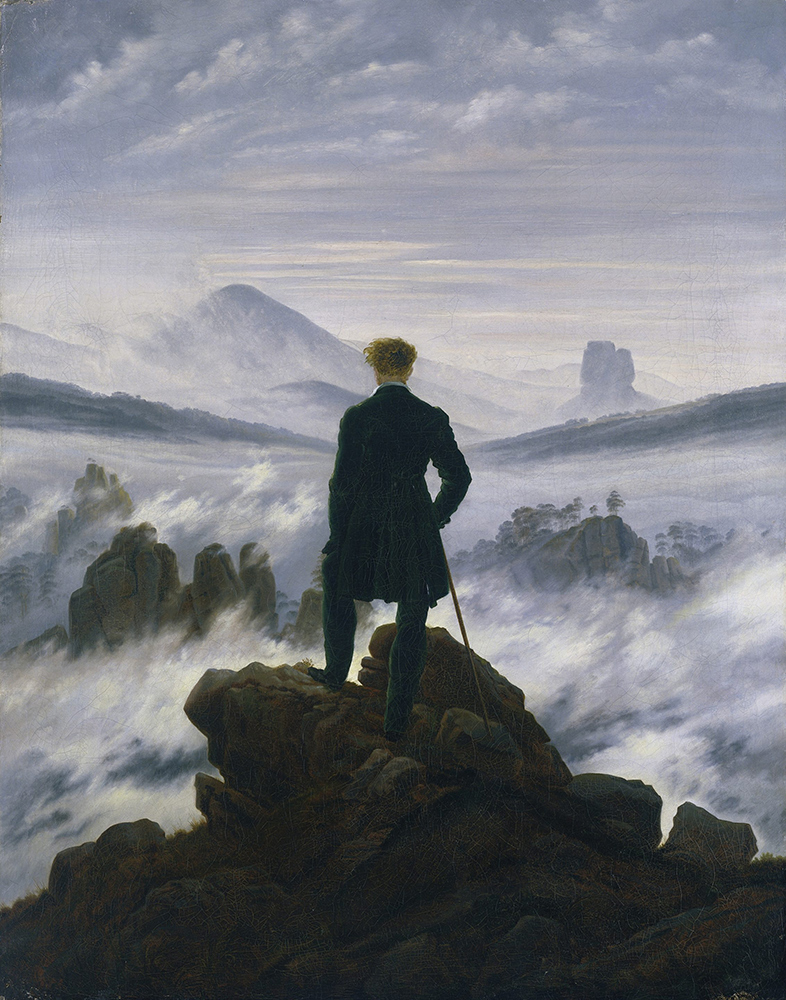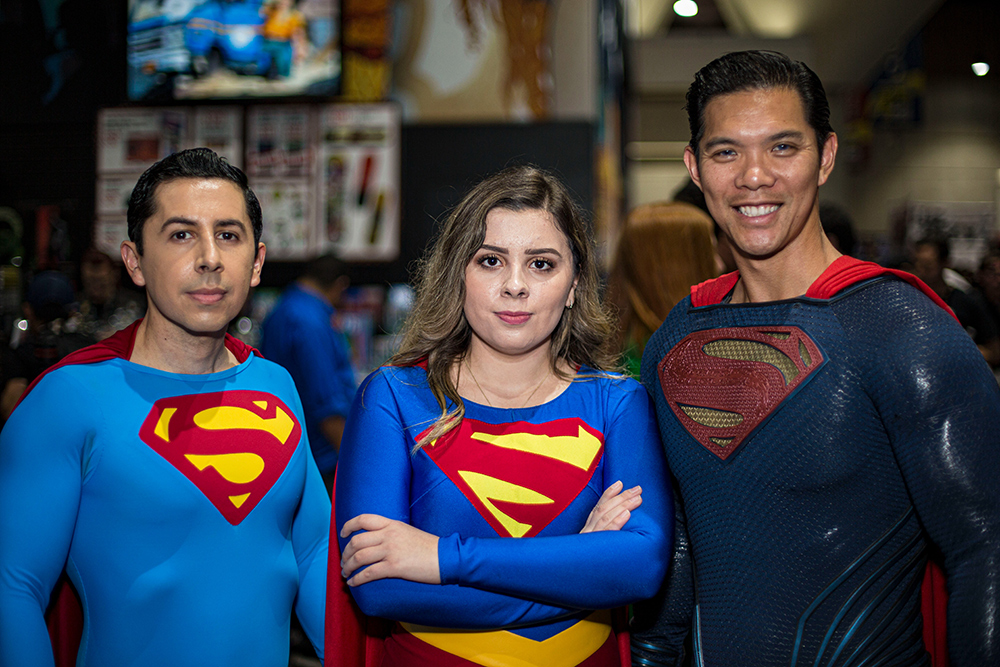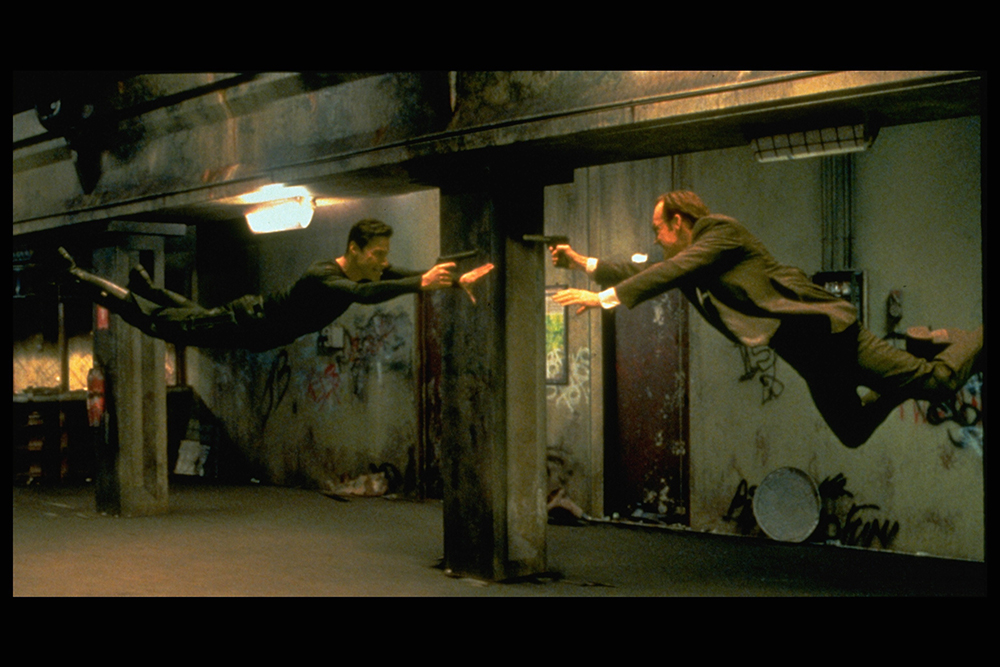
德国哲学家弗里德里希·尼采在其1883年出版的经典著作《查拉图斯特拉如是说》(Thus Spoke Zarathustra)中写道:“人是一种必将被超越的东西。”他还认为:“人是一根绳索,系于禽兽与超人之间,凌驾于深渊之上。人的伟大之处在于,他是一座桥梁,而不是终点。”
写下这篇文章时,这位著名学者一方面受困于对德国文化的矛盾情绪(包括与他的朋友、作曲家理查德·瓦格纳的分歧),另一方面也深受多种疾病及可能已经构成毒瘾的鸦片嗜好之苦。但他同时也在努力认识历史学家口中的“第二次工业革命”,即大规模生产革命。
尼采的许多著作虽然在他有生之年让人觉得不知所云,却精准预言了一个充满他所谓“虚无主义”的20世纪,尤其是他那句著名的宣言“上帝已死”更是振聋发聩。取上帝而“代之”的是所谓“超人”(superman,德语Übermensch),他们能够主宰自己的命运、摒弃传统基督教规范、创造自己的价值体系,从而战胜人类面临的一切挑战。现在,我们迎来了人工智能时代,又有现代技术专家宣称,“第四次工业革命”将催生新的“超人”,这不禁让人产生疑问:人类是否仍是凌驾于深渊之上的绳索?
我们不妨回顾一下一路走来的历程。
快过子弹
每当出现颠覆性技术时,尼采关于“超人”诞生的预言似乎都会再次走入公众视野。在此举两个大家耳熟能详的例子。
第一个例子,在尼采构想出“超人”概念约半个世纪后的1939年,《动作漫画》(Action Comics)第一期面世发行,其中的漫画人物“超人”(Superman)成为史上首位漫画超级英雄。当时的世界正飞速进入原子时代——近期的热门大片《奥本海默》(Oppenheimer)讲述的就是这一时期的故事,社会享受着第二次工业革命的突破性成果带来的发展红利,遍布电梯、摩天大楼和汽车的现代化城市开始出现,而超人则代表一种能够轻松征服现代科技的形象。超人的口头禅是:“快过子弹!比火车头更有力量!纵身一跃,直上高楼!”(甚至这句话本身也颇具工业色彩,出自1940年的一档广播节目,当时,广播还是一种全新技术)。

尼采笔下的“超人”(Übermensch)是一种对抗宗教、超越基督教会规范的存在,而漫画中的超人(Superman)角色则致敬了一代代人类所取得的进步,拥有防弹皮肤、激光眼等超能力。
此外,尼采的“超人”是一个理想化的概念,只看字面就能让人联想到更超然的境界,而DC漫画中的超人则是来自外星世界——氪星(一个比地球更高级的星球)。漫画中的超人不仅身体素质优于常人,还保留了尼采笔下“超人”的某些特点,是道德和正义的象征。即使只看漫画超人在日常生活中的身份——克拉克·肯特,作为一名理想主义的记者(显然也是最道德正确的职业),他在道德上也同样无懈可击。
漫画中的超人形象与资本主义者和技术主义者所信奉的“超人类主义”(transhumanism)概念相辅相成。这一概念认为,在先进技术的加持下,人类将能够大幅增强自身能力、改善所处环境。这不禁让人想起尼采将人视为“绳索”和“需要超越的东西”的观点,或者超人类主义者“人是机械化基础”的理念。超人类主义中有一个“新人”的概念,这是一种理想化的乌托邦式完美人类。在尼采死后几十年,这一概念被共产主义、法西斯主义及其分支纳粹主义等非民主运动所利用,每个运动都设想通过科学和技术创造完美的公民。即使是对20世纪历史了解最少的学生也知道,上述尝试造成了可怕的悲剧性结果。
对21世纪的数字原住民来说,这些概念可能显得有些难以理解,但实际上,它们仍然深深扎根于主流政治和流行文化之中。世界首富埃隆·马斯克本人就是一位众所周知的超人类主义者,他正在积极推进太空殖民和脑机芯片项目。科幻小说也通过刻画各种类型的超人和超级人类实现了蓬勃发展,此类角色通常以乌托邦方式出现,例如20世纪80年代的《银翼杀手》(Blade Runner)和前些年的《黑客帝国》(The Matrix)。就连今年夏天的热门电影《芭比》(Barbie)也有一些超人类主义色彩。影片中,这个冒险进入现实世界的塑料娃娃具有刻板印象中那种理想化的女性气质和美貌,不过有影评认为,在现代生活中,女性根本无法成为女超人。

21世纪的超人有哪些特点?
由于“理想”人固有的阶层特性,在我们看来,超人概念(尤其是在其与科技交织在一起时)已经成为一种常用的政治工具。虽然社会主义者和资本主义者都将超人类主义玩弄于股掌之间,但社会主义者对其进行了理论化,认为政治超人类主义或将催生出2.0版本的资本主义,一个科技驱动生产力实现飞跃的时代。
现在,第四次工业革命(智能自动化、互联互通和人工智能革命)已经近在眼前,哲学爱好者们可能在想,我们这个时代的“超人”会以怎样的形象出现在我们眼前?虽然现在下定论还为时尚早,但历史表明,人们总会寻找一个能够超越我们时代权力框架的理想化偶像。
全球顶级富豪孙正义提出,人工智能将成为我们这个时代的“超人” ,在他口中,这一发明的出现等同于“超级人类的诞生”。过去几十年,孙正义一直是全球主要的风险投资人之一,也是日本软银集团(SoftBank)的首席执行官。今年,他向投资者宣布,由于ChatGPT的出现让他对人工智能和生命意义产生了一种悲观的生存危机,他已决定将公司和事业重心投向“设计人类未来”的工作之中。此番言论听起来多少有点像尼采口中的虚无主义危机。
这当然不是说孙正义是下一个尼采,但他与尼采笔下的“超人”的相似之处显而易见。孙正义告诉软银的股东们,他每天都在用人工智能提出和完善各种想法,并在不到一年的时间里利用这一工具开发了600多项新发明。从超人类主义者的角度来看,他显然正在利用新兴技术大大增强自己的智力和构思能力。当世界经历另一场技术革命、人们寻找能够超越我们这个时代权力框架的理想实体时,我们有必要先问一问,这个框架是什么?可以说,答案就是“信息”。
或许我们可以将人工智能与尼采笔下的“超人”与漫画中的超人进行某种类比:尼采笔下的“超人”控制的是道德的制高点,在道德上白璧无瑕;漫画中的“超人”掌控的是傲人的身体素质,刀枪不入,而人工智能拥有的则是储存在上万枚芯片上的渊博知识。不同的是,漫画中的超人和尼采笔下的超人都是虚构人物,人们无法与他们进行真正的互动。他们只存在于理想的概念之中,而人工智能则是一种正在推动世界快速变化的真实工具。
至于人工智能将对劳动力队伍带来何种影响,现在下结论还为时尚早,但我们在看到各种超人概念时或许应该抱持谨慎态度。也许人类确实是凌驾于深渊之上的一根绳索,但借助技术追求超能力无疑是最有可能让我们坠入深渊的路径。(财富中文网)
译者:梁宇
审校:夏林
德国哲学家弗里德里希·尼采在其1883年出版的经典著作《查拉图斯特拉如是说》(Thus Spoke Zarathustra)中写道:“人是一种必将被超越的东西。”他还认为:“人是一根绳索,系于禽兽与超人之间,凌驾于深渊之上。人的伟大之处在于,他是一座桥梁,而不是终点。”
写下这篇文章时,这位著名学者一方面受困于对德国文化的矛盾情绪(包括与他的朋友、作曲家理查德·瓦格纳的分歧),另一方面也深受多种疾病及可能已经构成毒瘾的鸦片嗜好之苦。但他同时也在努力认识历史学家口中的“第二次工业革命”,即大规模生产革命。
尼采的许多著作虽然在他有生之年让人觉得不知所云,却精准预言了一个充满他所谓“虚无主义”的20世纪,尤其是他那句著名的宣言“上帝已死”更是振聋发聩。取上帝而“代之”的是所谓“超人”(superman,德语Übermensch),他们能够主宰自己的命运、摒弃传统基督教规范、创造自己的价值体系,从而战胜人类面临的一切挑战。现在,我们迎来了人工智能时代,又有现代技术专家宣称,“第四次工业革命”将催生新的“超人”,这不禁让人产生疑问:人类是否仍是凌驾于深渊之上的绳索?
我们不妨回顾一下一路走来的历程。
快过子弹
每当出现颠覆性技术时,尼采关于“超人”诞生的预言似乎都会再次走入公众视野。在此举两个大家耳熟能详的例子。
第一个例子,在尼采构想出“超人”概念约半个世纪后的1939年,《动作漫画》(Action Comics)第一期面世发行,其中的漫画人物“超人”(Superman)成为史上首位漫画超级英雄。当时的世界正飞速进入原子时代——近期的热门大片《奥本海默》(Oppenheimer)讲述的就是这一时期的故事,社会享受着第二次工业革命的突破性成果带来的发展红利,遍布电梯、摩天大楼和汽车的现代化城市开始出现,而超人则代表一种能够轻松征服现代科技的形象。超人的口头禅是:“快过子弹!比火车头更有力量!纵身一跃,直上高楼!”(甚至这句话本身也颇具工业色彩,出自1940年的一档广播节目,当时,广播还是一种全新技术)。
尼采笔下的“超人”(Übermensch)是一种对抗宗教、超越基督教会规范的存在,而漫画中的超人(Superman)角色则致敬了一代代人类所取得的进步,拥有防弹皮肤、激光眼等超能力。
此外,尼采的“超人”是一个理想化的概念,只看字面就能让人联想到更超然的境界,而DC漫画中的超人则是来自外星世界——氪星(一个比地球更高级的星球)。漫画中的超人不仅身体素质优于常人,还保留了尼采笔下“超人”的某些特点,是道德和正义的象征。即使只看漫画超人在日常生活中的身份——克拉克·肯特,作为一名理想主义的记者(显然也是最道德正确的职业),他在道德上也同样无懈可击。
漫画中的超人形象与资本主义者和技术主义者所信奉的“超人类主义”(transhumanism)概念相辅相成。这一概念认为,在先进技术的加持下,人类将能够大幅增强自身能力、改善所处环境。这不禁让人想起尼采将人视为“绳索”和“需要超越的东西”的观点,或者超人类主义者“人是机械化基础”的理念。超人类主义中有一个“新人”的概念,这是一种理想化的乌托邦式完美人类。在尼采死后几十年,这一概念被共产主义、法西斯主义及其分支纳粹主义等非民主运动所利用,每个运动都设想通过科学和技术创造完美的公民。即使是对20世纪历史了解最少的学生也知道,上述尝试造成了可怕的悲剧性结果。
对21世纪的数字原住民来说,这些概念可能显得有些难以理解,但实际上,它们仍然深深扎根于主流政治和流行文化之中。世界首富埃隆·马斯克本人就是一位众所周知的超人类主义者,他正在积极推进太空殖民和脑机芯片项目。科幻小说也通过刻画各种类型的超人和超级人类实现了蓬勃发展,此类角色通常以乌托邦方式出现,例如20世纪80年代的《银翼杀手》(Blade Runner)和前些年的《黑客帝国》(The Matrix)。就连今年夏天的热门电影《芭比》(Barbie)也有一些超人类主义色彩。影片中,这个冒险进入现实世界的塑料娃娃具有刻板印象中那种理想化的女性气质和美貌,不过有影评认为,在现代生活中,女性根本无法成为女超人。
21世纪的超人有哪些特点?
由于“理想”人固有的阶层特性,在我们看来,超人概念(尤其是在其与科技交织在一起时)已经成为一种常用的政治工具。虽然社会主义者和资本主义者都将超人类主义玩弄于股掌之间,但社会主义者对其进行了理论化,认为政治超人类主义或将催生出2.0版本的资本主义,一个科技驱动生产力实现飞跃的时代。
现在,第四次工业革命(智能自动化、互联互通和人工智能革命)已经近在眼前,哲学爱好者们可能在想,我们这个时代的“超人”会以怎样的形象出现在我们眼前?虽然现在下定论还为时尚早,但历史表明,人们总会寻找一个能够超越我们时代权力框架的理想化偶像。
全球顶级富豪孙正义提出,人工智能将成为我们这个时代的“超人” ,在他口中,这一发明的出现等同于“超级人类的诞生”。过去几十年,孙正义一直是全球主要的风险投资人之一,也是日本软银集团(SoftBank)的首席执行官。今年,他向投资者宣布,由于ChatGPT的出现让他对人工智能和生命意义产生了一种悲观的生存危机,他已决定将公司和事业重心投向“设计人类未来”的工作之中。此番言论听起来多少有点像尼采口中的虚无主义危机。
这当然不是说孙正义是下一个尼采,但他与尼采笔下的“超人”的相似之处显而易见。孙正义告诉软银的股东们,他每天都在用人工智能提出和完善各种想法,并在不到一年的时间里利用这一工具开发了600多项新发明。从超人类主义者的角度来看,他显然正在利用新兴技术大大增强自己的智力和构思能力。当世界经历另一场技术革命、人们寻找能够超越我们这个时代权力框架的理想实体时,我们有必要先问一问,这个框架是什么?可以说,答案就是“信息”。
或许我们可以将人工智能与尼采笔下的“超人”与漫画中的超人进行某种类比:尼采笔下的“超人”控制的是道德的制高点,在道德上白璧无瑕;漫画中的“超人”掌控的是傲人的身体素质,刀枪不入,而人工智能拥有的则是储存在上万枚芯片上的渊博知识。不同的是,漫画中的超人和尼采笔下的超人都是虚构人物,人们无法与他们进行真正的互动。他们只存在于理想的概念之中,而人工智能则是一种正在推动世界快速变化的真实工具。
至于人工智能将对劳动力队伍带来何种影响,现在下结论还为时尚早,但我们在看到各种超人概念时或许应该抱持谨慎态度。也许人类确实是凌驾于深渊之上的一根绳索,但借助技术追求超能力无疑是最有可能让我们坠入深渊的路径。(财富中文网)
译者:梁宇
审校:夏林
“Man is something that shall be overcome,” the German philosopher Friedrich Nietzsche wrote in his 1883 classic Thus Spoke Zarathustra. “Man is a rope, tied between beast and superman—a rope over an abyss. What is great in man is that he is a bridge and not an end.”
When he wrote this, the famously troubled intellectual was reckoning with ambivalent feelings about German culture (including a fallout with his friend, the composer Richard Wagner), a series of illnesses, and an opium habit that very likely constituted a drug addiction. But he was also grappling with what historians call the Second Industrial Revolution, that is, the revolution of mass production.
Much of Nietzsche’s writings, obscure in his own lifetime, foreshadowed a 20th century full of what he called “nihilism,” especially his famous proclamation, “God is dead.” In his place was the superman, or “Übermensch,” a determiner of his own life, who eschews traditional Christian mores and births his own system of values that allows him to conquer all human challenges. Now artificial intelligence is here, and modern technologists are proclaiming a “Fourth Industrial Revolution” that will give birth to a new “superhuman,” which begs the question, is humanity still the proverbial rope over the abyss?
It’s worth a look back at how we got here.
Faster than a speeding bullet
During times of technological upheaval, it seems that Nietszche’s prophecy of the birth of the Übermensch always reemerges. There are two famous examples—you already know them.
First, about a half-century after Nietzsche conceived his version, Action Comics released its first issue in 1939, featuring a character named “Superman” who went on to become the very first comic-book superhero just as the world was hurtling into the atomic age, recently depicted in the blockbuster smash hit, “Oppenheimer.” As society digested the breakthroughs of the Second Industrial Revolution, creating modern cities full of elevators, skyscrapers and cars, Superman represented a figure who could easily conquer modern technology. It was all there in the catch phrase: “Faster than a speeding bullet! More powerful than a locomotive! Able to leap tall buildings in a single bound!” (Even this phrase itself was industrial in nature, originating in a 1940 show for the radio, an entirely new technology.)
While Nietzsche’s Übermensch was an embodiment of religious rejection, a being who transcended the mores of the Christian church, the character of Superman nodded to generations of human advancement, with abilities including bulletproof skin and laser-beaming eyes.
Moreover, Nietzsche’s Übermensch was an aspirational concept whose name literally evokes a higher plane, and DC’s Superman is from the alien world of Krypton, a planet more sophisticated than Earth. Not only is Superman physically superior to the normal man, but he retains aspects of the original Übermensch as a pillar of moral uprightness. Even in his alter ego as Clark Kent, he is morally infallible as an idealistic journalist (the most morally correct profession, of course).
The superman goes hand-in-hand with the concept of transhumanism embraced by capitalists and technologists—the idea that advanced technology will allow humans to transformatively augment themselves and their environment. It harkens back to Nietzsche’s vision of man as a “rope” and “something to be overcome,” or in the transhumanist view, a base for mechanization. Within transhumanism is the concept of the “new man,” a utopian ideal of the perfect person, a concept coopted decades after Nietzsche’s death by non-Democratic movements ranging from Communism to Fascism to its subset, Nazism, each of which envisioned the perfect citizen created through science and tech. Even the most casual student of 20th century history knows this went tragically and horrifically wrong.
While these concepts seem bizarre to a 21st century digital native, they’re actually still heavily embedded into mainstream politics and pop culture. The world’s richest man himself, Elon Musk, is a known transhumanist who is actively working on projects to colonize space and insert computer chips into our brains. Science fiction has flourished by examining variations on the superman and the transhuman, often in dystopian ways, for example with Blade Runner in the 1980s and The Matrix more recently. Even this summer’s smash hit Barbie movie dabbles in transhumanism, as a plastic doll blessed with the stereotypical ideal of femininity and beauty ventures into the real world, although several readings of that film land with the takeaway that there’s just no way to be a Superwoman in modern life.
Whatever happened to the Superman of the 21st century?
We see the superman concept, especially as it intersects with technology, as a frequently used political tool because of the inherent stratification an “ideal” person erects. And although transhumanism is toyed with by socialists and capitalists alike, sociologists have theorized that political transhumanism could birth Capitalism 2.0, an era hyperfixated on tech-driven productivity leaps.
Now, as we are rounding the bend on the Fourth Industrial Revolution—the revolution of smart automation, interconnectivity, and artificial intelligence—philosophy buffs may be wondering what will emerge as the Übermensch of our time. While it’s early, to be sure, history hints that people will search for an aspirational icon that can transcend the power frameworks of our time.
One person has already posited a theory that our Übermensch will be A.I.: Masayoshi Son, one of the world’s richest men, has already labeled the invention as the “Birth of Superhuman.” Son, who has been a major venture capital investor for decades and is the CEO of Japan’s SoftBank, announced to investors this year that the emergence of ChatGPT brought him to a tearful existential crisis over A.I. and the meaning of life, before deciding to dedicate his company and career to “design[ing] the future of humanity.” Sounds slightly tangential to Nietzsche’s crisis on nihilism.
This surely isn’t to say that Son is the next Nietzsche—but the resemblance to the Übermensch is unmistakable. Son told SoftBank shareholders that he pitches and refines ideas with A.I. every day, and had used the tool to develop over 600 new inventions in less than a year. Through a transhumanist lens, he’s using emerging technology to hugely augment his intelligence and ideation abilities. As the world goes through another technological upheaval, and people look for an aspirational entity that can transcend the power framework of our time, it’s important to ask what that framework is. Arguably, it’s information.
In the way that Nietzche’s Übermensch controlled his own infallible set of morals, or comic books’ Superman controlled his invulnerable body, perhaps the parallel can be drawn of A.I. controlling its vast, 10,000 chip-cache of knowledge. The difference is that the Übermensch and Superman existed as fictional characters, without any real way for people to interact with them. They were aspirational, while A.I. is a real tool that’s driving rapid change in the world.
It’s too early to say how A.I. will transform the workforce, but we should probably take any notion of a superhuman with a grain of salt. Maybe humanity is a rope over an abyss, but the surest way to fall into it is through the pursuit of superpowers through technology.






